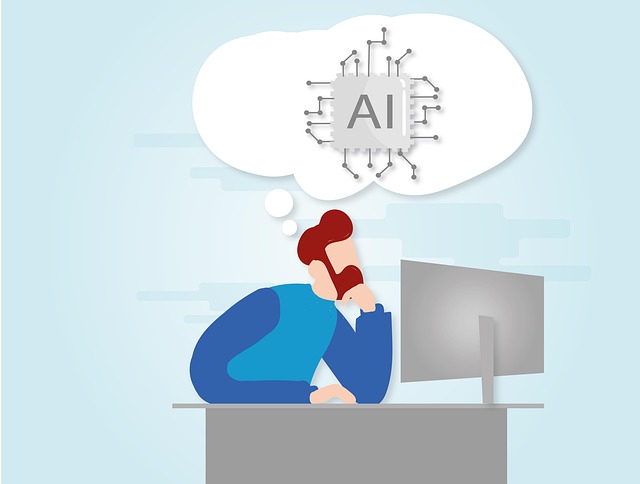Artificial Intelligence (AI) chatbots are transforming e-commerce by enhancing customer engagement and streamlining operations. Businesses should understand rule-based or conversational AI types before selecting one based on scalability, integration, adaptability, and brand alignment. The ideal chatbot manages diverse tasks, integrates with systems, and leverages NLP libraries and machine learning frameworks. Effective conversational flows, seamless e-commerce platform integration, and strategic testing ensure a superior user experience driving sales growth. Regular updates, algorithm refinement, and performance analysis maintain the best AI chatbot for ecommerce's effectiveness.
Building an AI Chatbot can transform your ecommerce platform into a dynamic, customer-centric experience. This comprehensive guide outlines the steps to create the best AI Chatbot for ecommerce, from understanding diverse chatbot types and defining your scope to choosing the right tech and designing seamless conversational flows. We’ll walk you through integrating your chatbot with existing platforms, rigorous testing, deployment, and continuous improvement strategies to ensure your AI assistant delivers exceptional value.
- Understanding the Purpose and Types of AI Chatbots for Ecommerce
- Defining the Scope and Features of Your Ideal AI Chatbot
- Choosing the Right Technology and Development Tools
- Designing Conversational Flows and Integrating with Ecommerce Platforms
- Testing, Deploying, and Continuously Improving Your Best AI Chatbot
Understanding the Purpose and Types of AI Chatbots for Ecommerce

In the realm of e-commerce, Artificial Intelligence (AI) Chatbots have emerged as a powerful tool to enhance customer engagement and streamline operations. Understanding the purpose and types of AI Chatbots is crucial for businesses aiming to leverage this technology effectively. The primary role of an AI Chatbot in ecommerce is to provide instant customer support, answer product queries, offer personalized recommendations, and facilitate seamless purchasing experiences.
There are various types of AI Chatbots designed for different needs. For instance, a rule-based chatbot follows pre-defined rules and scripts to handle simple tasks, while a conversational AI chatbot uses natural language processing (NLP) to understand and respond to customer queries in a more human-like manner. When choosing the best AI chatbot for ecommerce, businesses should consider factors like scalability, integration capabilities with existing systems, and the ability to adapt to evolving customer needs and market trends.
Defining the Scope and Features of Your Ideal AI Chatbot

When defining the scope and features of your ideal AI Chatbot, especially for an eCommerce platform, start by understanding your users’ needs and pain points. Identify common queries, from product recommendations to order status updates, and design responses that feel natural and human-like. The best ai chatbot for ecommerce should be able to handle a wide range of tasks, including customer service, sales assistance, and inventory management.
Consider the conversational flow and ensure your AI can understand context, handle follow-up questions, and escalate issues when needed. Integrating with your existing eCommerce systems is crucial for seamless data exchange and accurate information retrieval. Think about the tone and personality that aligns with your brand image, whether it’s friendly, professional, or quirky, to create a unique and engaging chatbot experience.
Choosing the Right Technology and Development Tools

When it comes to building an AI Chatbot, especially for the vibrant and bustling Ecommerce sector, choosing the right technology is paramount. The best ai chatbot for ecommerce should be designed with scalability in mind, capable of handling a high volume of user interactions simultaneously. Natural Language Processing (NLP) libraries such as NLTK and spaCy are excellent starting points for understanding and processing user queries. These tools provide robust features for text analysis, enabling your chatbot to comprehend a wide range of customer inquiries.
Additionally, consider leveraging machine learning frameworks like TensorFlow or PyTorch for training advanced conversational AI models. These platforms offer pre-built components and flexible architectures that simplify the development process. Integrating with popular development environments like Python or Node.js ensures smooth coding and efficient bot deployment. Remember, the technology you select should align with your business needs, allowing for seamless integration with existing systems and providing a superior user experience.
Designing Conversational Flows and Integrating with Ecommerce Platforms

Designing Conversational Flows is a critical aspect of building an effective AI Chatbot, especially when aimed at enhancing customer experiences on ecommerce platforms. The key lies in creating natural and intuitive dialogues that guide users through their purchasing journey. Start by mapping out potential user queries and tailoring responses accordingly. A well-designed flow ensures the chatbot provides relevant product information, assists with navigation, and offers personalized recommendations, making it the best AI chatbot for ecommerce.
Integrating your AI Chatbot with an ecommerce platform is a seamless process when utilizing robust development tools. This enables the chatbot to access product catalogs, user data, and shopping carts, facilitating dynamic interactions. For instance, the chatbot can offer product suggestions based on browsing history or previous purchases, enhancing customer engagement. By streamlining these integrations, you can leverage the best ai chatbot for ecommerce to boost sales, improve customer satisfaction, and drive business growth.
Testing, Deploying, and Continuously Improving Your Best AI Chatbot

After meticulously designing and building your best AI chatbot for ecommerce, the next crucial step is testing, deploying, and continuously improving it. Testing ensures that every function operates seamlessly and delivers the intended user experience. Engage in rigorous testing scenarios to uncover potential bugs or inconsistencies in responses. Use a diverse set of test cases covering various customer queries, edge cases, and system limitations.
Deploying your best AI chatbot requires strategic placement on your website or platform. Ensure it’s easily accessible, visible, and integrated seamlessly with existing functionalities. Monitor its performance closely post-deployment, gathering user feedback to identify areas for enhancement. Continuously improving the chatbot involves updating its knowledge base, refining algorithms, and personalizing interactions based on user behavior and preferences. Regularly analyze chat logs, customer satisfaction scores, and conversion rates to optimize your best AI chatbot for ecommerce.
Building a top-tier AI chatbot is an exciting journey that can significantly enhance your ecommerce platform’s customer engagement and sales. By understanding your target audience, defining clear objectives, and selecting the right tools, you can create a powerful conversational assistant. Through strategic design, rigorous testing, and continuous improvement, you’ll deploy the best AI chatbot for ecommerce, providing an exceptional user experience and driving business growth.
